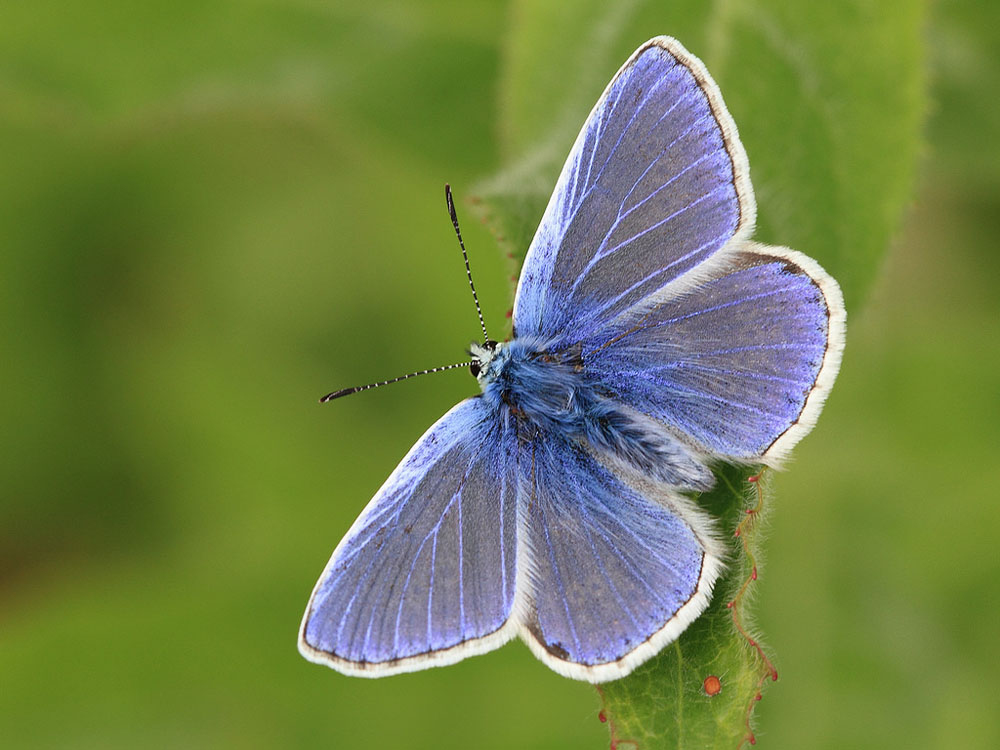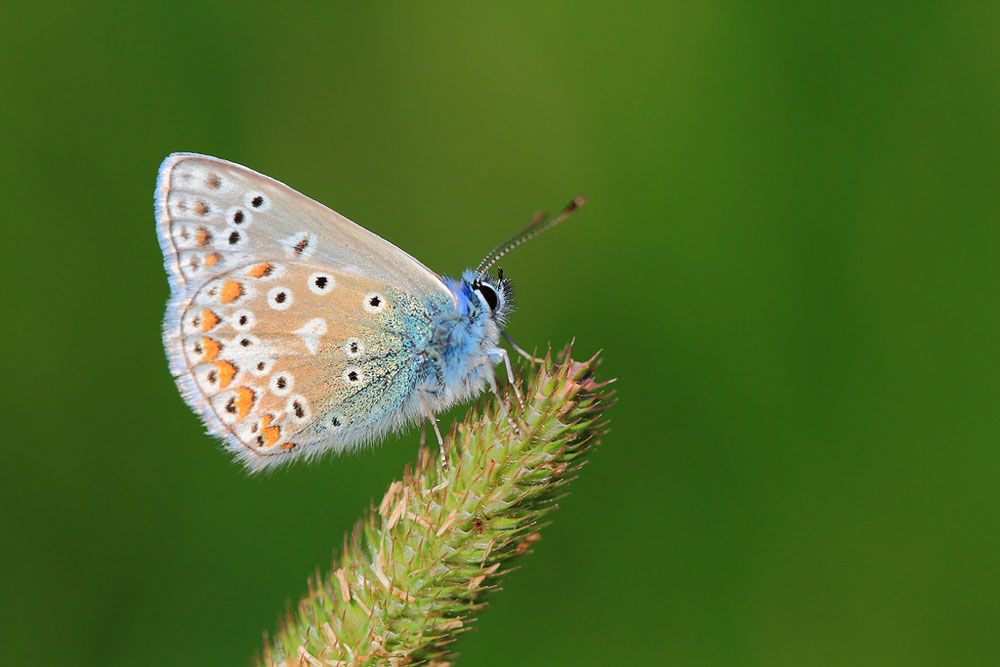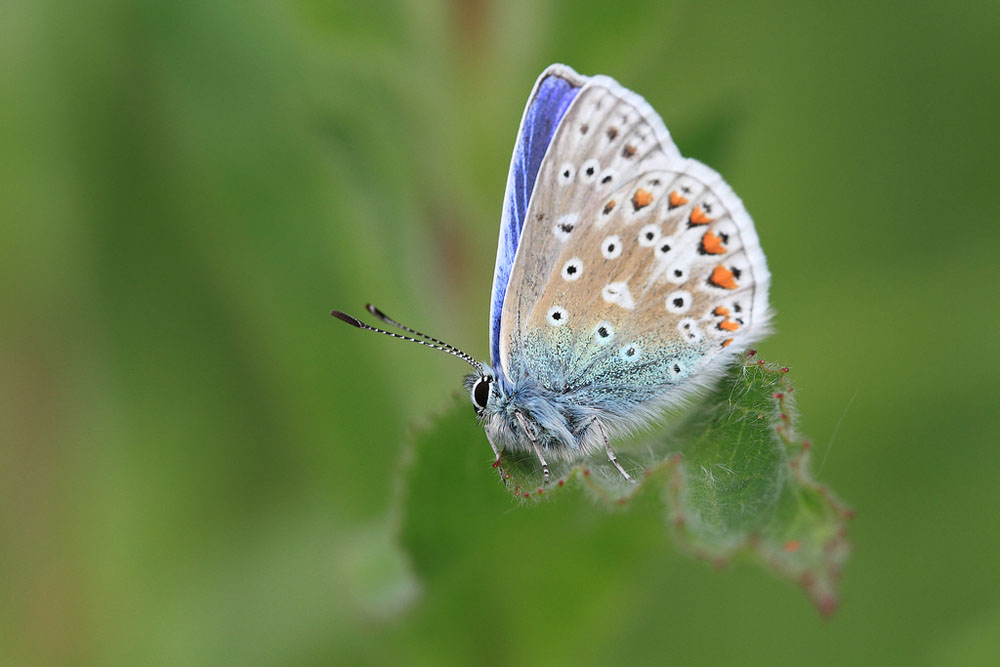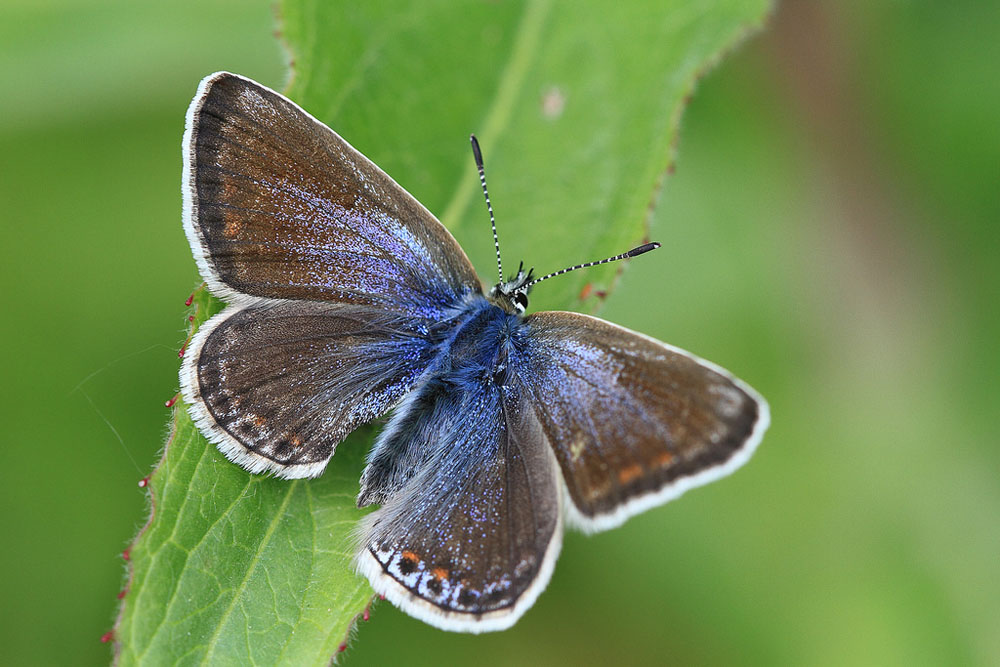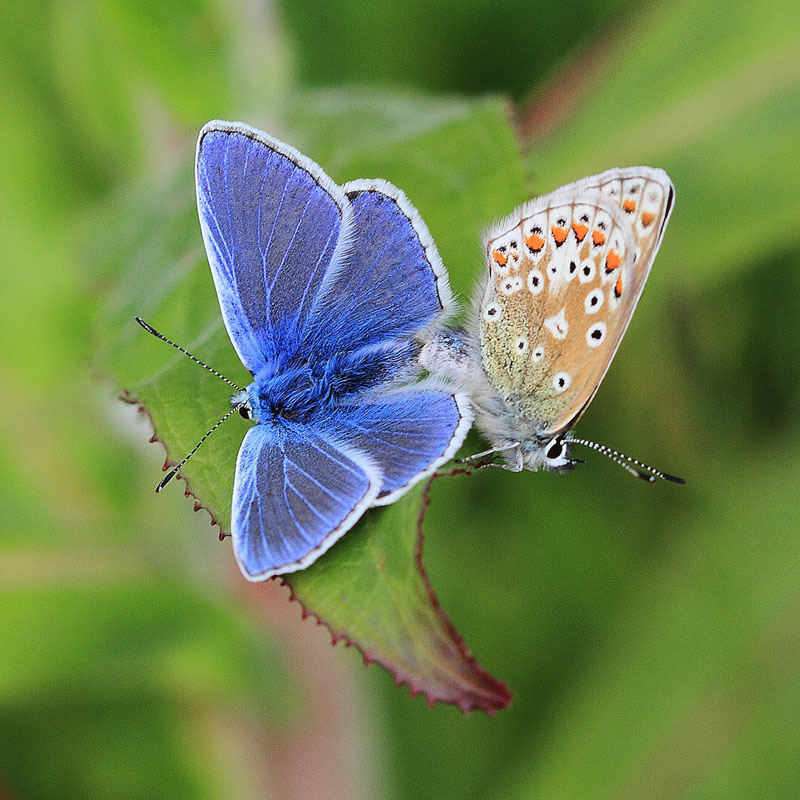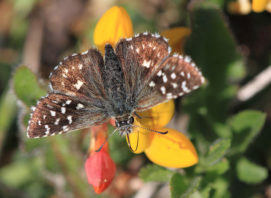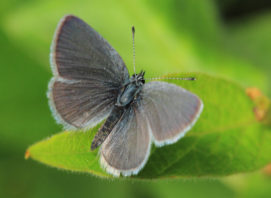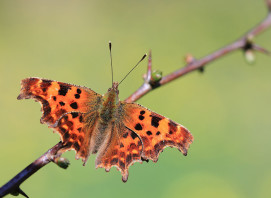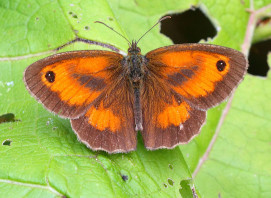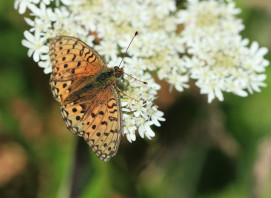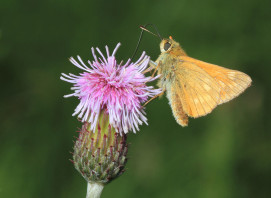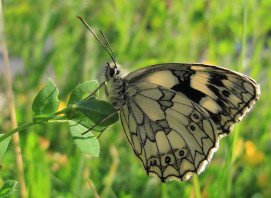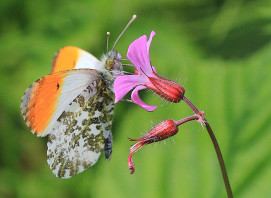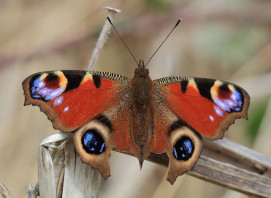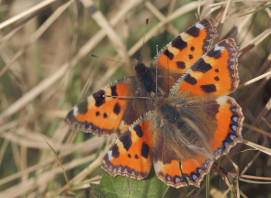Common Blue
Pic 1: As with all butterflies, the eye catching wings of the Common Blue derive from minute scales arranged in overlapping tiles across both surfaces of each wing. As Jeremy Thomas explains: ‘the colours are produced in a combination of ways. Shining physical tints arise from the elaborate internal structure of each scale, consisting of multiple layers of three-dimensional diffraction gratings in the chitin from which they are made. These scatter light to create Tyndall blues, the same effect that produces blues in the human eyes and also in the sky. Pigments in each scale make an even greater contribution to wing colour. Many of these are synthesised by the chrysalis during scale development, which occurs a few days before adult emergence during a crucial period when different genes are switched on and off to regulate the intricate patterns and colours of the upper-and underwings’. (The Butterflies of Britain and Ireland p131).
Pic 2: I prefer to use the name Icarus Blue instead of Common Blue as there is nothing common about this beautiful butterfly. As the ecological geneticist E.B. Ford (1901-88) amusingly put it:
“Occasionally people describe a ‘beautiful, bright blue’ butterfly to me, and ask its name. Almost without fail their excitement dies when I tell them it is a Common Blue. I now tend to use the name which I first heard a few years ago, the Icarus Blue (after its scientific name, P. icarus). Now that keeps the smile on their faces.”
Pic 3: While resting and with wings closed their wing margins are edged with orange spots. Like the Adonis and Chalkhill Blues, considerable variations occur in underwing markings, although less frequently. Very occasionally, the forewing spot close to the body is absent.
Pic 4: Female Common Blues differ greatly in the amount of blue and brown colour on their upper wings, both within colonies and between regions. Some are uniformly brown, although most have a dusting of blue scales towards the base. According to Jeremy Thomas (The Butterflies of Britain and Ireland p132), ‘the preponderance of blue markings increases the further one travels west and north, culminating in a magnificent form called mariscolore, which is regarded as a distinct subspecies by some entomologists.’ It is certainly one of the most beautiful of all British butterflies. Not only are the wings a clear deep blue, but the orange spots are also enlarged almost into a band.
Pic 5: Finding mating butterflies in the field is fairly easy, particularly with common species such as the Common Blue. They can sometimes be seen flying around, the larger female carrying the male dangling behind her, but usually when mating they sit still on a leaf or stout grass stem. Mating for Common Blues is quite a lengthy process (they were still at it after an hour) and while they initiate the mateing in typical back-to-back fashion this does not prevent them from moving about from side to side or opening their wings as the male is clearly doing.

